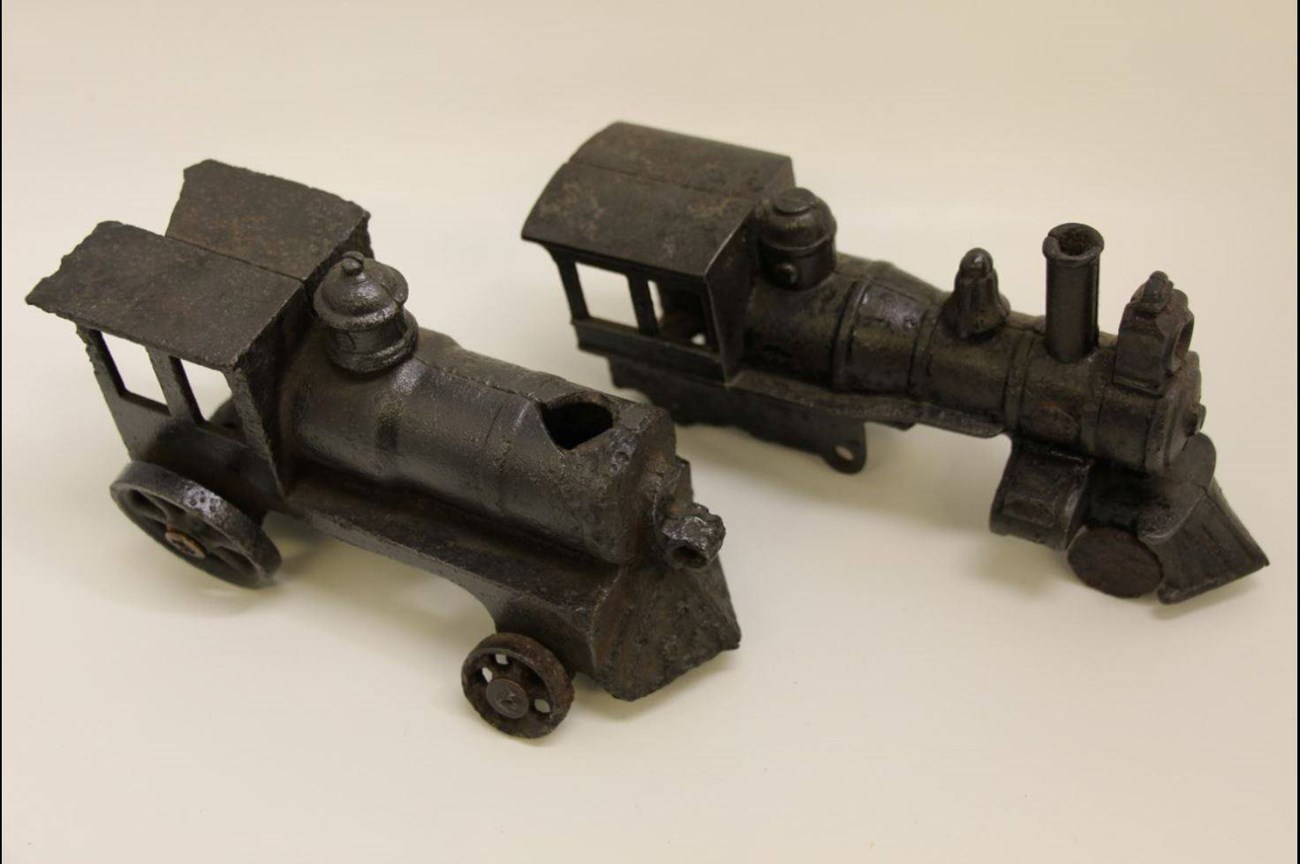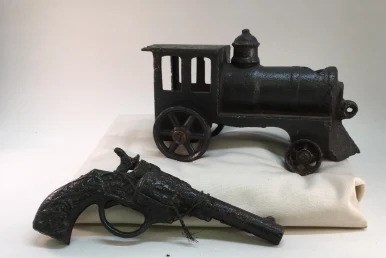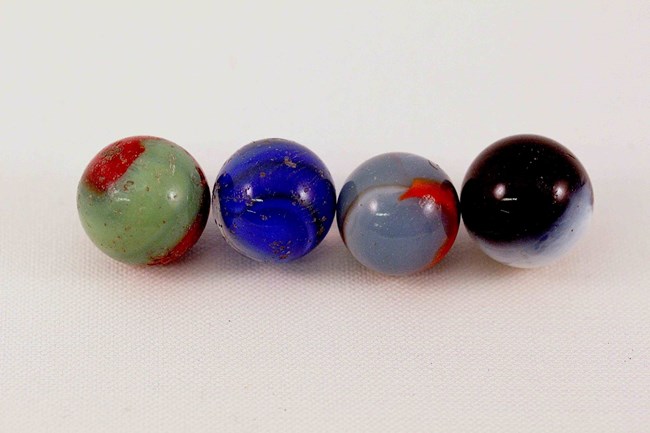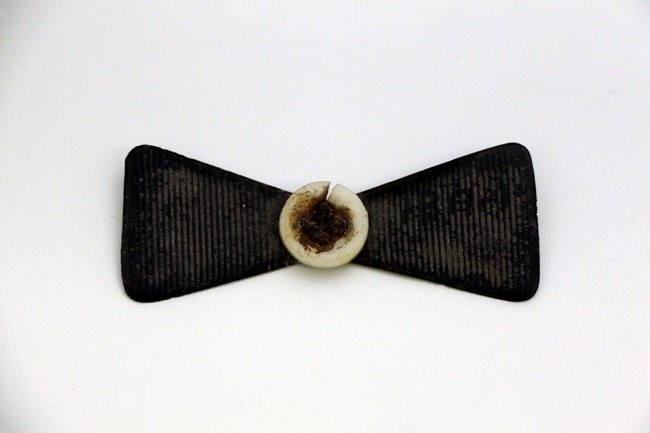Part of a series of articles titled Curious Collections of Fort Stanwix, The 19th & 20th Centuries.
Previous: “Frozen Charlotte”
Article
What was your favorite toy growing-up? Do you still have it or has it been lost? Within park collections there is an assortment of children's toys. Below are just a few of them.

National Park Service
Pictured above are two 19th century cast iron toy trains discovered by archeologists during excavations at Fort Stanwix in the 1970s. These two toys are artifacts from the families who lived, worked, and played in 19th-century Rome. When the site of the fort was cleared before its reconstruction in the 1970s, several homes and commercial buildings from the 1800s were torn down.

National Park Service
One home was that of Dr. Willey J.P Kingsley, whose property on Liberty Street, covered the area in which these two objects were found. He purchased the home in the 1861 and remodeled the house for his growing family in 1870. His sons Willey and George had a small playhouse in the backyard near where these trains were uncovered. It is very possible that these toys belonged to the two boys. Kingsley was a prominent figure in 19th Century Rome and served as the Director of the Rome Locomotive Works. In the late 1800s and early 1900s, toys were often made to advertise new and mechanical products, such as trains, steam engines, and, later, cars. It is possible that these ones were related to their father's work. The boys also collected rocks and minerals to display in their playhouse, which may have included a Herkimer diamond, which is also in the park’s museum collection.

National Park Service
This toy gun, pictured with one of the locomotives, was found in a privy a couple doors down from the Kingsley House. The privy was used from 1890 to about 1930 and was associated with a home that was occupied by laborers. Unfortunately, this is all we know about the people who lived there. But it is enough for us to wonder, did the children from these two homes know each other and play together?

These glass marbles were found during the excavations of the 1970s. These were most likely from the children of 20th Century Rome. At the historic fort, children would have likely played with clay marbles. Marbles make up a small portion of the toys within the museum collection and are housed and cataloged in an orderly fashion in the park museum facilities; not strewn about the house! Did you or your children play with marbles as a kid? Do you still have your marbles and what do they look like; or have you lost them? Could they become part of a future archeological collection?

National Park Service
This plastic bow tie from the museum collection was found during the 1970s excavation of the fort. As it is made of plastic, a modern material, it likely dates to the mid-20th Century. The button might be a nozzle to squirt water for laughs.
As seen in the photo below, the materials that 18th Century children's toys were made from would've been mostly biodegradable. Perhaps many of these objects slowly decayed over the years so nothing remained. There were metal trinkets found in the excavations that may have belonged to the children. For example, a single brass jaw harp with a diamond shaped cross section was found in the north ditch, a location where garrison families would have lived.
Something to keep in mind is that these children and their families were refugees. One might even argue that during a conflict, like the American Revolution, play would be even more important to their mental health and maintaining a sense of normalcy. Therefore these toys might be the most valuable thing they owned! It is possible that the few precious objects that they owned were carefully guarded and left the fort when they did.
One thing remains certain, where there are children, there will be play, and likely the laughter that accompanies it.
![D85_7824[1]-.2.2 Wooden toys strewn about. There are jacob's ladders, and a cup and ball toy. There is also a cloth doll.](/fost/images/D85_7824-1.jpg?maxwidth=1300&autorotate=false)
National Park Service
Part of a series of articles titled Curious Collections of Fort Stanwix, The 19th & 20th Centuries.
Previous: “Frozen Charlotte”
Last updated: July 28, 2025